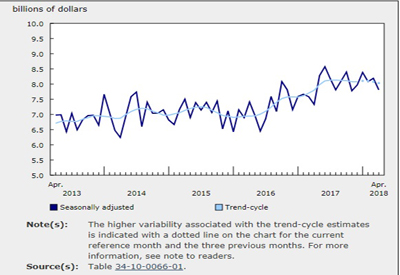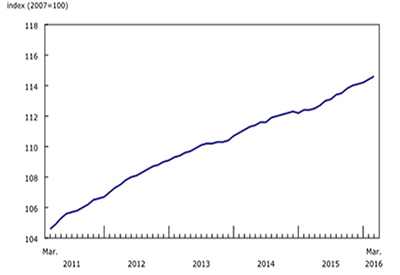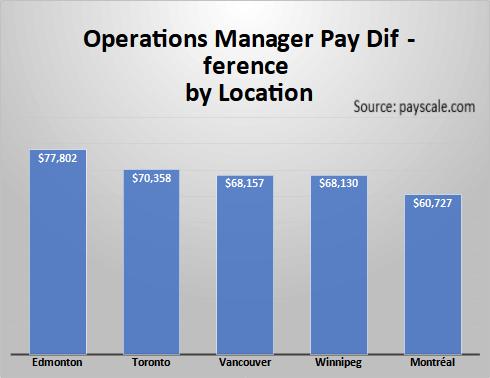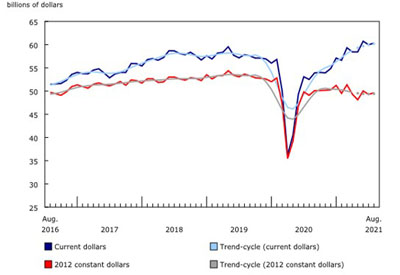Who Sells to the OEM Market?

Aug 30, 2021
By David Gordon
With the economy strong it’s important to look forward to identify how to maintain your momentum. This requires looking at niche markets but remember, your niche can be someone else’s mainstay. Think OEM (original equipment manufacturer).
One such area is the industrial market. The industrial market is very nuanced. There are “commodity” opportunities which many refer to as the MRO segment of the business and then there is the OEM aspect. And there are multiple segments within each, especially within the OEM segment.
Frank Hurtte, River Heights Consulting, focuses on the “niche / high-end” aspect of the industrial market … the automation aspect. We’ve collaborated on some projects over the years, and more so recently, bringing different and complementary perspectives to projects and clients.
In his recent research, Frank has identified some differentiators that are driving opportunities for distributors (and there are opportunities for manufacturers here if they are willing to focus resources).
Here’s Frank on selling…
Let’s talk about selling. Specifically, selling technical products that possess unique features differentiating them from the competition.
Further let us define precisely what we mean by selling. I believe there are several definitions of types of selling. An example might illustrate the two most radically different types of selling.
Further comparing the two types of selling
Distributors specializing in transactional (only) selling generally carry multiple brands of the same product. They advertise/justify this as a customer convenience touting “one-stop shopping” for customers. However, this works about the same as Walmart’s approach to selling colas. When a customer walks into their local mega-centre the company does not care if they buy Coke, Pepsi, RC, or some other brand. Further, this approach also leads to “house brands” like Wally Worlds Sam’s Choice Cola.
Another example of transactional selling shows up in the efforts of Amazon. Instead of coming into the store, the customer hits Amazon via the internet. Again, if customers know what they want, products can be purchased. And like Walmart, Amazon doesn’t much care which product is selected as long as the purchase comes from Amazon.
At both Walmart and Amazon, companies are offered opportunities to grow their sales for a fee. If you happen to sell a generic product, it might work.
I believe the same rule applies to “commodity-like” products and distributors. If a customer wants a common product where brand is not a consideration, they ask for it sometimes using industry slang and the customer service representative provides a price and delivery.
In the casesof distributors carrying multiple brands of a commodity product, the smartest of distributor salespeople sells (using a generic form of the word) the brand/product that creates the greatest gross margin. It is possible for a manufacturer to temporarily increase their unit volume by dropping margin. The issue becomes, most manufacturers do not carefully calculate the increase necessary to offset the loss in margin. Further, in time, other credible competitors adjust their price making gains difficult.
This brings us to the question of who sells the product
To answer this question, let’s break down distributor selling into more granularity. I have listed every component of selling which came to mind. If you have other points, please send them to me and I will add to the summary.
Mostly transaction activities
• Inventory in the right place and at the right time
• Ability to extend credit when appropriate
• A mechanism/s for the customer to place the order
• Kitting of parts
• Summary billing
• The ability to get the product to the customer
Advanced transactional activities
• Expertise required to assist the customer in product selection
• Ability to provide product related training
Active selling activities
• Expertise required to solve customer problems with existing systems
• Technical capabilities required to identify solutions on systems being developed
• The ability to convert competitive products to a new/better solution
• Experience required to proactively identify customer issues before the customer recognizes them
• Capability to provide proof of concept on new solutions
• Ability to provide system/application related training
• Staff knowledge required to assist in customer configuration/programming of new products
• Inhouse (or partnerships) capability to provide turnkey systems or pieces of the system
• Mechanism for assisting with start-up issues via troubleshooting
Sales activities cost money for the distributor
Each of these activities cost money. If the distributor does not provide the activity, then the onus falls onto the manufacturer. Somebody pays — it’s just a matter of who ends up with the bill.
Sadly, most distributors have not done a good job of tracking the expenses tied to each of these activities. Based on observations based on the study of distributor association profit benchmarking reports, it could be surmised the “active selling” tasks require a gross margin percentage which is approximately 30-32 percent higher than “transactional selling.”
Contrasting distributor types to see the need for higher margins:
In the industrial sector, distributors operating in electrical distribution — members of the National Association of Electrical Distributors (NAED) and Automation Distribution members of the Association for High Tech Distribution (AHTD) — often sell to similar customer sets. The primary difference comes in the types of products sold with NAED members selling a higher percentage of “commodity like” products.
NAED members generally sell more replacement products into end users in MRO environments. In many of these instances, the transaction involves replacing a component that arrived in their manufacturing facility on some piece of machinery. Most times, the customer knows the part number and description of the replacement part. Even if the product is not a commodity, the selling effort is still largely transactional.
AHTD distributors, who tend to focus on new OEM applications and more technologically complex end-user needs, engage in more active selling. While they do sell some replacement parts, the majority of their business is focused on active sales.
Profit benchmarking reports tell the story
Both associations (AHTD and NAED) participate in profit benchmarking. Data from these indicate the typical gross margin for an AHTD member is approximately 26% while the typical NAED member reports a gross margin hovering at about 20%.
Armed with these data, one could expect the bottom-line profitability of the AHTD members to be substantially higher than that of NAED members. However, the reports indicate the profit margin percentages for the groups to be approximately equal. I believe this certainly points to an increased cost of sales activities.
What this means for manufacturers
Manufacturers must understand the difference between transactional and active selling. While a number of manufacturers have created tiered-distribution plans with terms like “market makers,” “market servers,” and other types of categorizations, the strategies appear to have failed.
In a special report generated after nearly 20 in-depth interviews with highly focused and active selling distributors, we arrived at these conclusions:
The problem is many times the situation is not black and white — there are hundreds of shades of gray. Even the previously mentioned companies have salespeople probing into other types of business. This creates issues. Here are some problem points made by the distributors interviewed:
• Market servers can receive special pricing agreements (SPA). If this type of distributor can get an SPA this opens the doors for them to block out the market making distributor.
• Poor discipline in the selection of market maker distributors. This is often influenced by field sales and reps who feel like they gain favour with the distributor by offering up the additional margins associated with being a market making distributor.
• The clout of placing large stock orders from national chains. Large orders do not necessarily qualify a distributor for this role.
• Customer requests by large end users hoping to gain additional discounts. It is the role of a procurement department to drive unit price cost to the minimum level. Opening up the distributor landscape to other distributors typically drives the prices down.
Sighting another recently finished report on small to midsized distributors in the market, we found many distributors who have become extremely specialized in specific technologies. These distributors have created a niche by selling a few very focused product groups, mostly to OEMs serving one or two categories.
These distributors state they must often switch their active selling direction because their manufacturing partners allow other distributors to apply margin pressure against them at their accounts. This is disturbing because this group of distributors is truly creating market expanding services to the manufacturer in at least several categories.
Manufacturers with the broadest product lines often fail to realize the specialized activities of this breed of distributor. The result is extra efforts being required of the manufacturer’s team to supplement the efforts of a more general distributor.
The time is ripe to better understand who is doing the work
This is complicated. First, product technologies shift. For example, years ago, variable frequency drives were considered cutting edge technology, yet today many classes of this product approach “commodity” status. Secondly, some distributors fall into the middle ground — actively selling in some instances and transactionally selling in others.
Further complicating things, manufacturer field sales teams (rep-based, direct employees, and regional managers) are often asked to judge distributor performance without much objective input. Many bet on larger plays in the hope they will ramp up their active selling activities.
In the case of manufacturers with multiple distributors in the market, the manufacturer’s team probably knows the transactional distributor better than the active seller. Why? The active sellers often know the products better or at least as well as the factory salesperson. And the nature of the sale precludes lots of day-to-day distributor/manufacturer interaction.
Finally
Manufacturers who understand the size and extent of the opportunity to expand market share in new products and technologies find ways to model and mould their channel sales efforts to match their distributor partners. Strangely, many manufacturers do not fully understand the value of market share on some of their products. Without this key piece of information, decisions surrounding the cost of sales activities is impossible. Sad but true …
The challenge
Distributors make the choice in how they want to go to market. Some are willing to invest the resources to have a highly trained sales staff. Highly trained relates to products, applications and sales skills. Inevitably they may pay more for their salespeople initially, or invest more, but they are seeking sales specialists. Further, these companies typically also invest in specialists or have individuals who specializing in products, applications or perhaps even industries.
There are also other attributes of these “active selling / market maker” distributors.
The challenge for manufacturers, especially publicly held companies, is the desire (perhaps need) to have “more” as in “more sales, more distribution / outlets and to reach more customers”. Focus is typically not part of their vocabulary. Nor is patience (as it can take time to pursue the OEM market and an OEM account.)
Further, manufacturer salesforce discipline is needed.
Insights can be gathered. Strategies can be developed. The key is understanding each party’s value proposition and targeting the right players, which requires asking the right questions.
As a distributor, the active selling model can be replicated for multiple segments of your business, especially if you decide to pursue niches. It requires focus and specialized resources. Pursuing the OEM market and other “active” environments that represent tomorrow’s growth requires focus.
David Gordon is President of Channel Marketing Group. Channel Marketing Group develops market share and growth strategies for manufacturers and distributors and develops market research. CMG’s specialty is the electrical industry. He also authors an electrical industry blog, www.electricaltrends.com. Channel Marketing Group does not engage with clients on detailed pricing strategies, however, given that pricing is a critical element of sales, marketing and growth planning, we do get asked about the topic and can share opinions and refer to those who focus on the area as well as share anecdotes. David Gordon can be reached at 919-488-8635 or dgordon@channelmkt.com.











